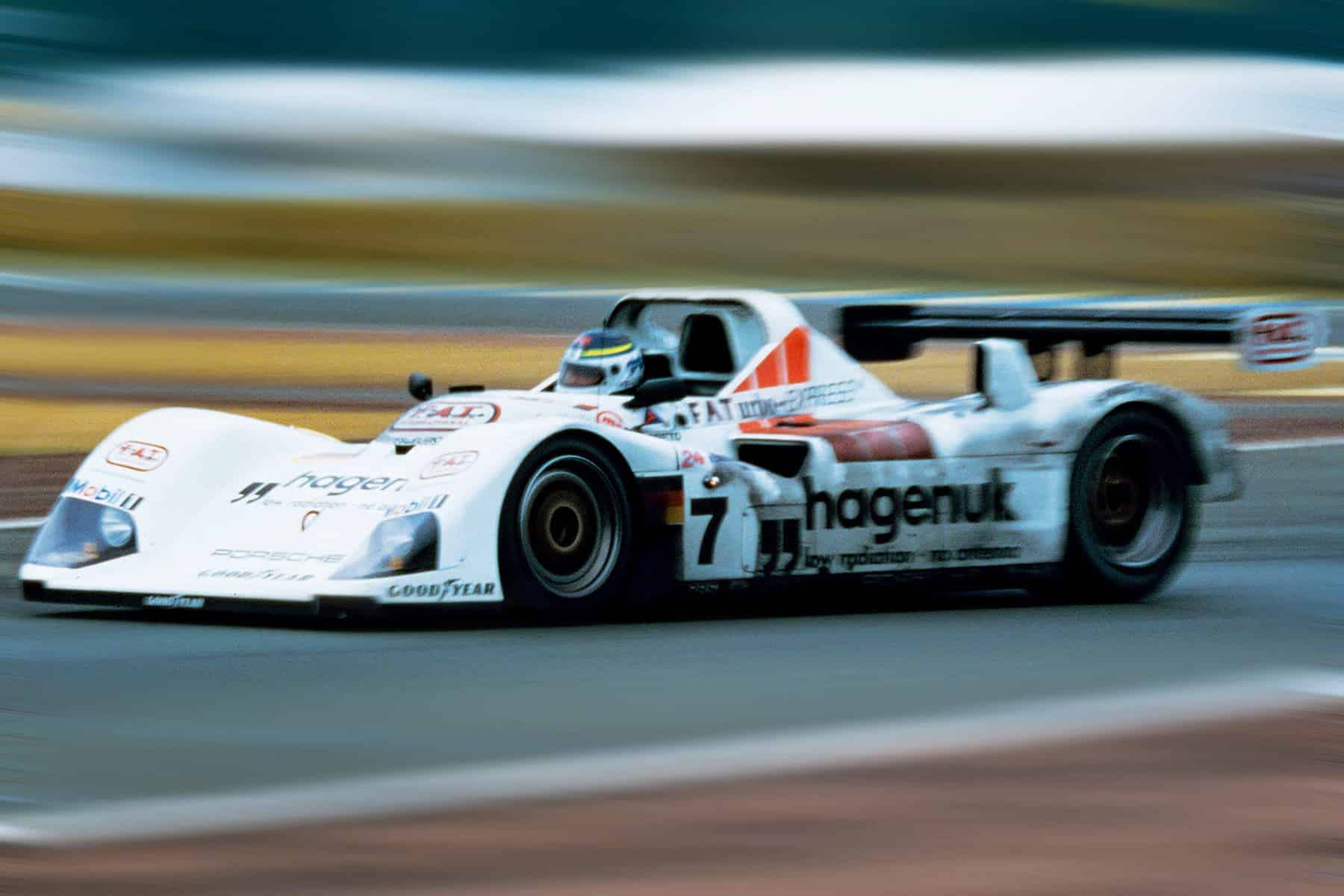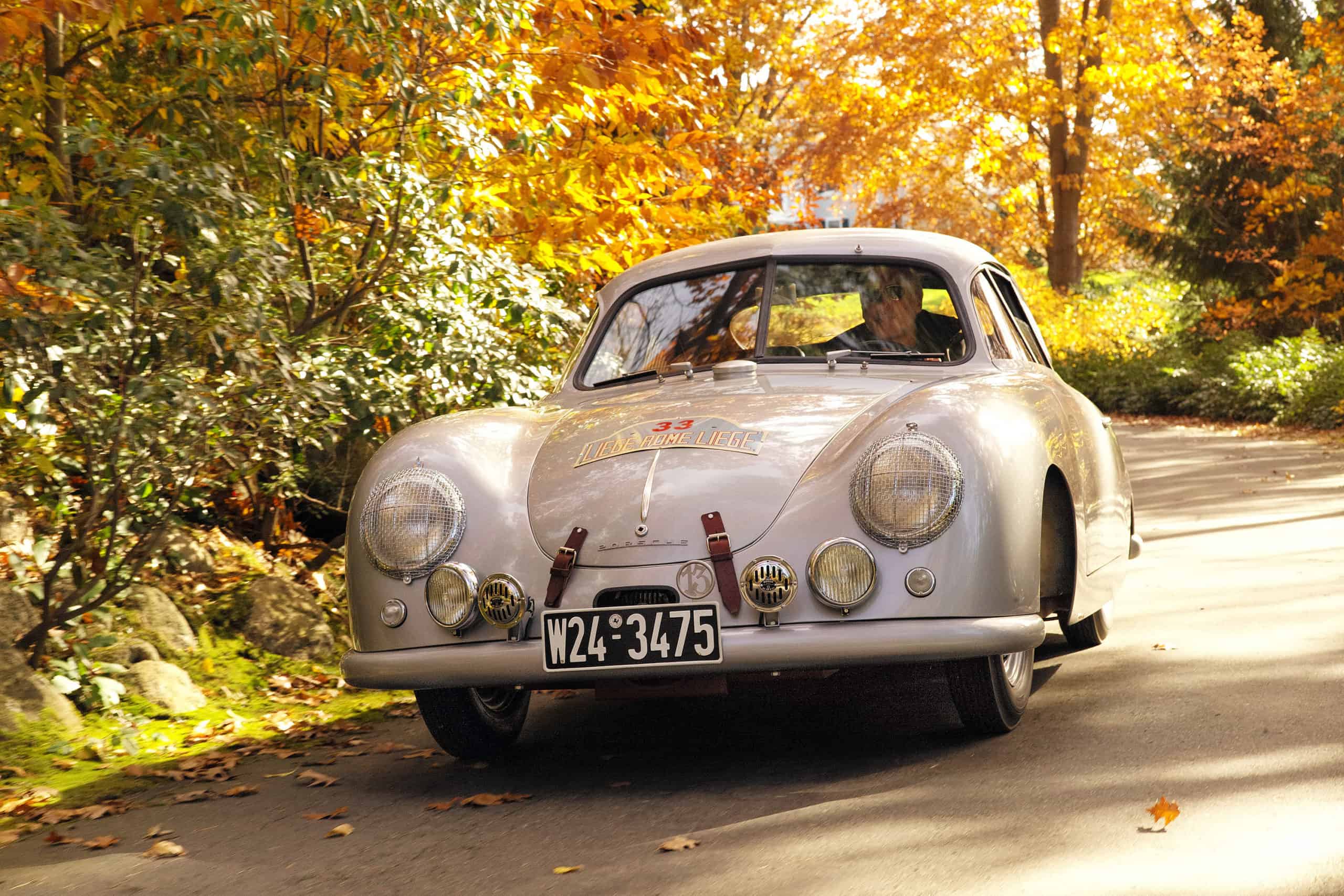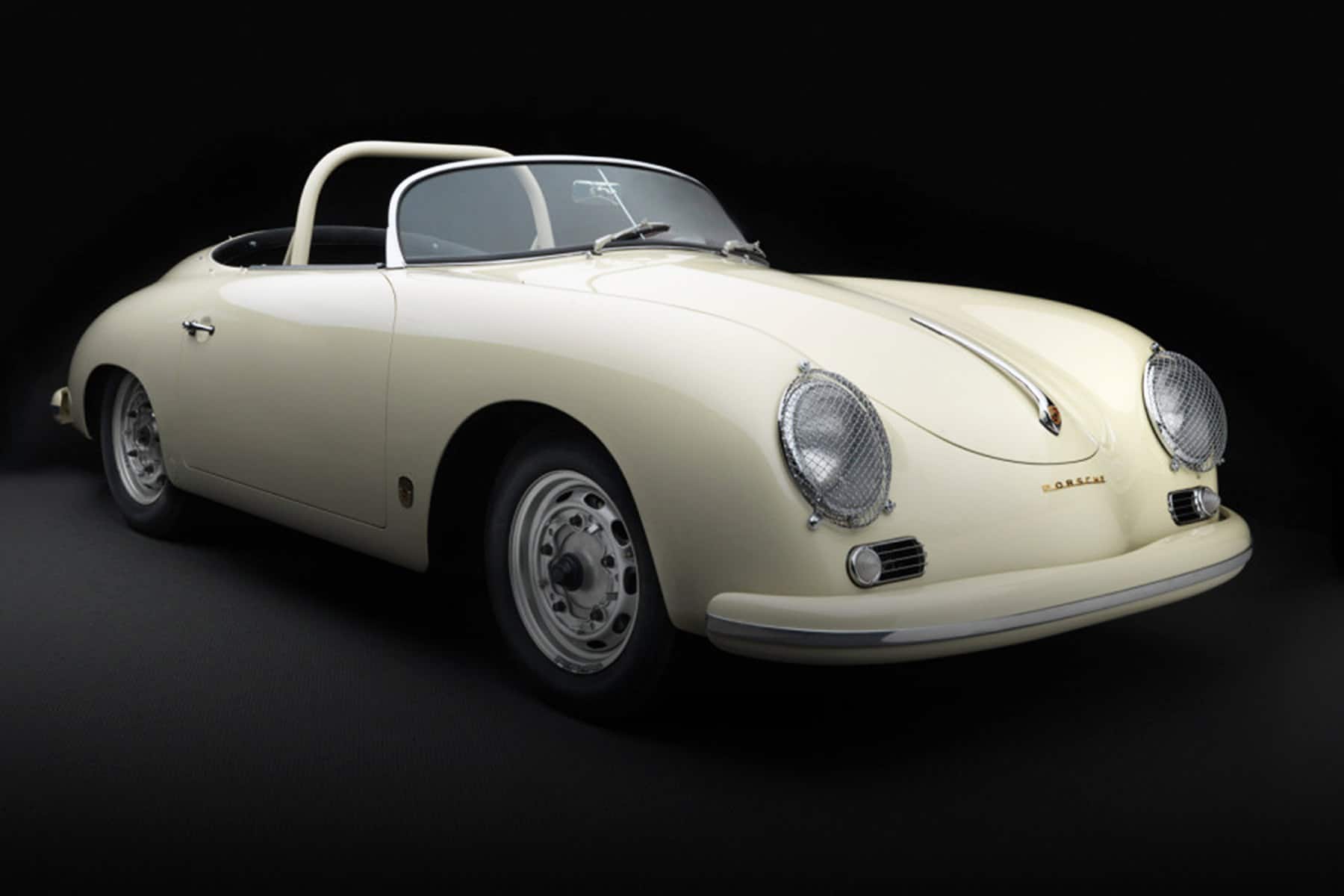
Giant Killer – Bruce Jennings’ 1958 Porsche Carrera GT Speedster
A fierce competitor, Jennings was always the man to beat
BY: KEN GROSS
WITH ADDITIONAL IMPRESSIONS BY MILES C. COLLIER
PHOTOS: PETER HARHOLDT
Locked forever in my memory are the sight and the sounds of Bruce Jennings’ iconic Speedster, blatting hoarsely through its stinger exhaust, jostling and juking with bigger and more powerful Corvettes on the Marlboro Raceway’s tight, twisty turns.
There was an acrid whiff of fuel as the quick Ivory “bathtub” accelerated hard down out of “Creek Bend” and closed in on the corner called “The Boot.” Pushrod Porsche 1600 Super Speedsters competed in E Production, but the 1587 cc, 4-cam flat four in Jennings’ 1600-pound Carrera put out more than 160 hp at 8,000 rpm, for a 10:1 power-to-weight ratio, catapulting the little car into C Production, right in the middle of a thundering big-bore pack where it handily outmaneuvered many of the top hot-shoes, to the delight of the crowd. They called Bruce Jennings “King Carrera.” His finesse at the wheel of his diminutive Porsche Speedster elevated a model that shouldn’t have been that competitive against much bigger cars, but no one told him that.
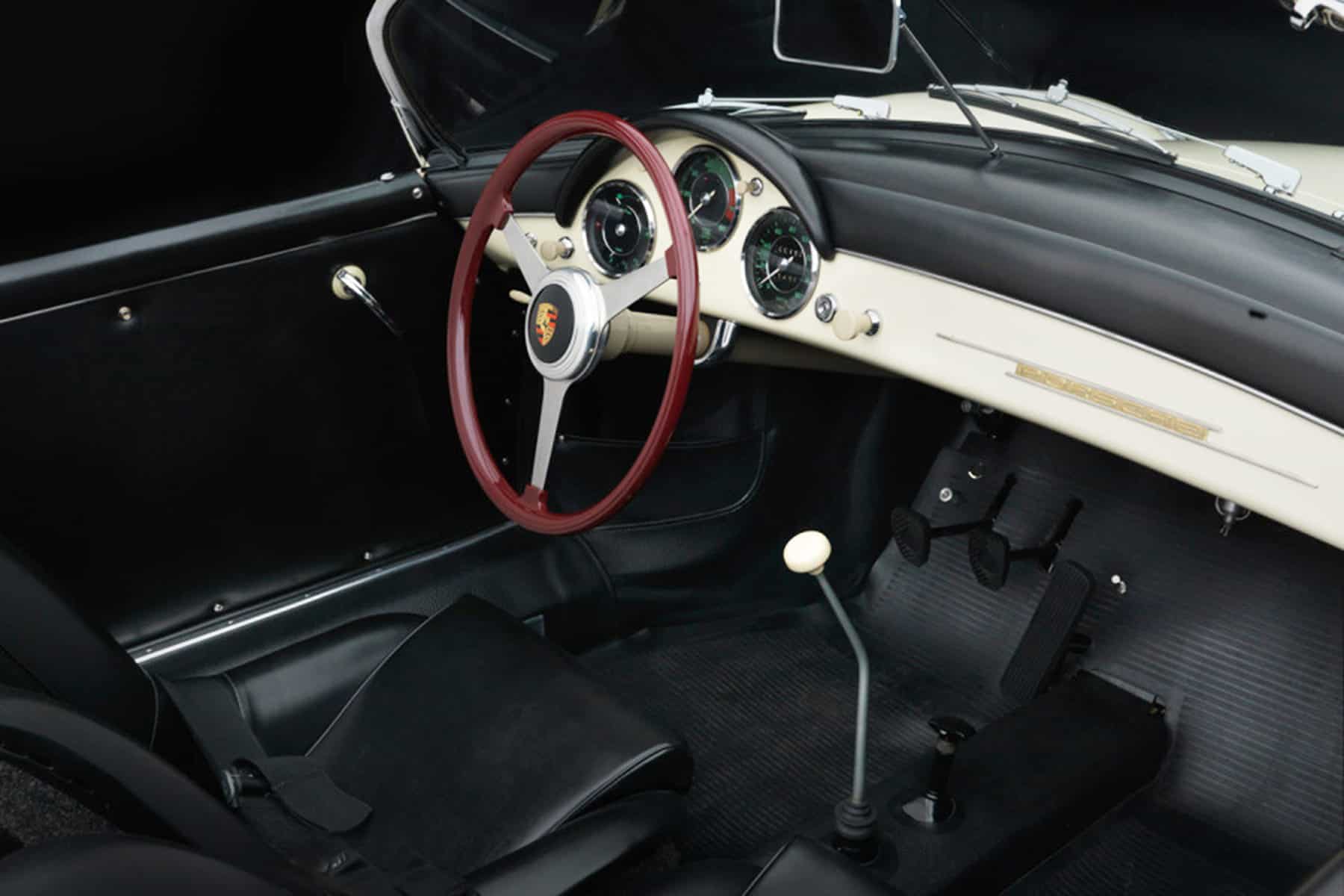
Born in 1927 in Baltimore, Jennings served for a year in the Army Air Corps in WWII, then joined his father’s insurance business. A Cadillac-driving, competitive skeet shooter, Bruce didn’t start racing until he was thirty, after he was smitten by a Porsche 1500 Normal Speedster. He went on to race successfully for thirty-five years, won more than two hundred races, came in second half as many times, and competed against the best drivers of his era on all the major SCCA tracks, as well as at Sebring, Daytona, and Le Mans.
Heinz Bade, a talented Swedish-German former VW factory mechanic, helped Bruce maintain and tune his cars. Mary Russell built his pushrod engines. (Mary had started by building Porsche flat fours in her kitchen, then established her own shop. She even appeared on “What’s My Line,” a popular TV game show where it’s likely no one guessed her unusual line of work.) Jennings and Bade used every trick in the book to wrest power from the temperamental 4-cam race engines and optimize handling. Along the way, Bruce evolved into a terrific driver.
In 1959, driving his Carrera GT, he won the first race of the season at Danville. At Cumberland next, despite starting thirty-fourth on the grid due to the silly “draw it out of a hat” qualifying system, Bruce gamely powered through the entire field, catching pole-sitter Harry Blanchard, who was driving another Carrera, on the last lap of the race. Hounded by Bruce Jennings, Blanchard eventually lost his brakes and spun. Bruce always felt it was the finest drive of his career. Who would argue?
Simply stated, Bruce Jennings was fearless. Competing at Watkins Glen in 1960, his car was hit at more than 100 mph, launching him thirty feet into the air. The wildly gyrating Porsche flipped four times, he was knocked unconscious and when he awoke, a priest was giving him the sacrament of Last Rites. A week later, despite a badly sprained back, he was racing again. He went on to win the SCCA Class C Production Championship that year. (The GT Speedster was moved out of E Production early on and went to C Production.) One of the highlights in 1960 was Bruce’s overall win at Daytona where he soundly beat the A and B Production Ferraris and Corvettes, as well as everything in his class. Bruce won the title in 1961 when the Carreras were bumped up to the B Production Class, and he captured the crown again in 1963.

For 1964, the Carreras reverted back to C Production. But it never mattered what the oft-changing rules specified. Bruce and his crew would creatively interpret the regs and, with his now-diabolical driving skill, they’d find a way to win. Jennings campaigned three Porsche Speedsters at different times, each with specific engine tuning, different exhaust systems, gearing and shocks, arranged to suit short, medium, and long tracks. That way, he didn’t have to continually change one car. His short and long track cars, both 1959 alloy speedsters, were painted red. He was determined to win repeatedly, and that he did. (Oh, and he had a fourth Carrera GT Speedster – it was his wife’s driver.)
Thanks to a close collaboration with Porsche Corporation of America, and an almost scientific interpretation of the rules, Bruce’s car were cleverly hot-rodded (legally) to the nines, using SCCA-legal Porsche RSK components. He ran huge 46 IDA Weber carbs (versus 40 DCMs), carefully ported and flowed heads, Porsche annular disc brakes in front and Spyder drums on the rear, roller bearing 4-cam engines (versus plain bearings) with Type 692 cases, and countless suspension modifications like special front Koni shocks that were stiff on bumps but soft on rebound. That kept the rear of the car squatted down and prevented swing axle camber jacking. Many of the Bruce Jennings/Heinz Bade “demon tweaks” were likely never revealed.
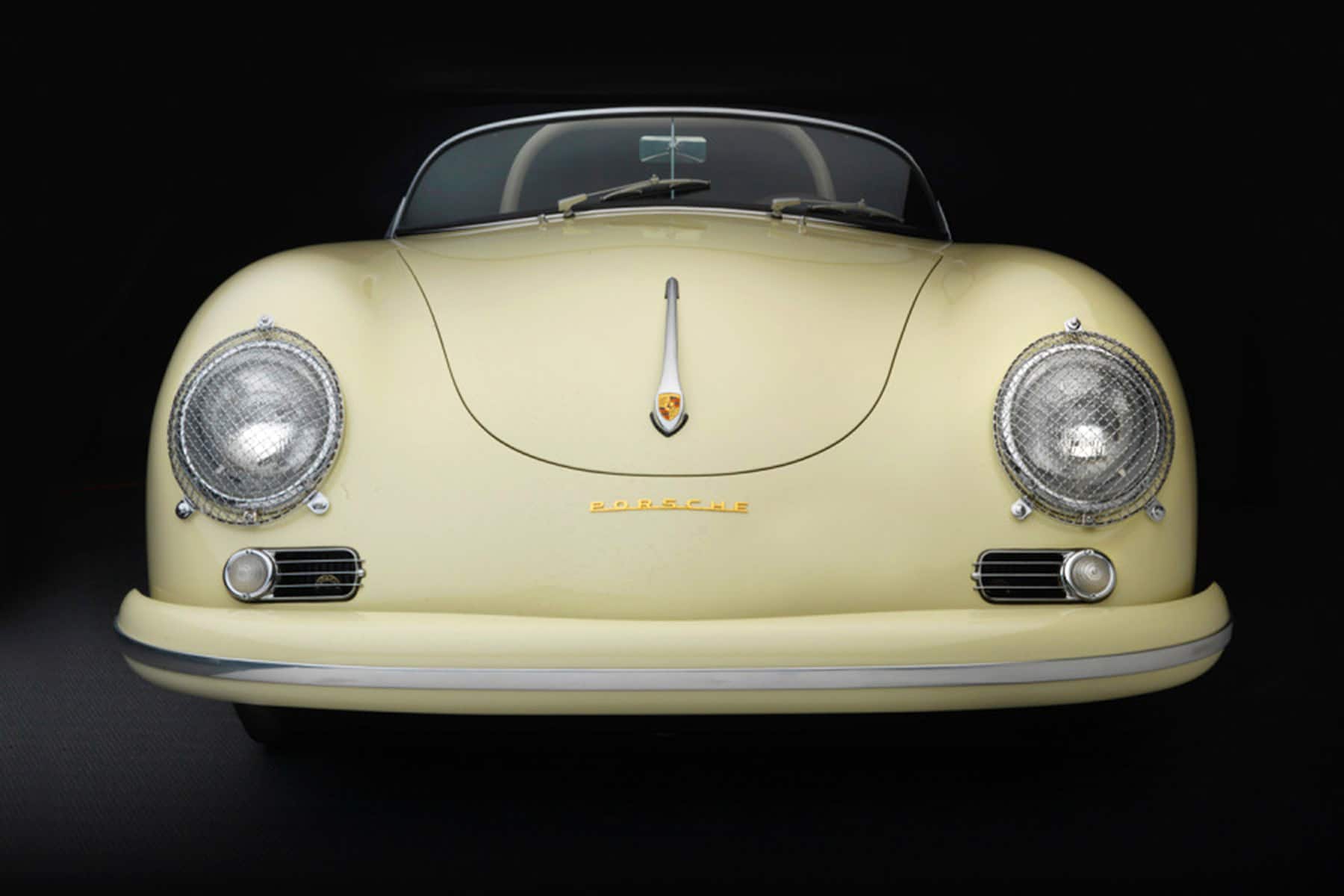
Bruce always stood on principle. He boycotted the 1965-to-1968 SCCA Runoffs, although he had qualified for all of them, because he felt Championships should be determined by the number of races won, not just in a single year-end race. After dominating SCCA contests for more than a decade, Bruce Jennings retired his Carrera Speedsters in 1970.
Jennings called this car “Mehitabel,” after a character in the 1920’s comic book series by Don Marquis – there was Archy, a cockroach who could type one letter at a time on a typewriter, and his pal Mehitabel, an alley cat. Mehitabel is the winningest Carrera GT Speedster of all time, with three SCCA National Championships (1958, driven by Emanuel “Pup” Pupilidy, and 1960 and 1963, piloted by Bruce Jennings). This Speedster won 67 SCCA National victories. For some inexplicable reason, it was the fastest of Bruce’s three racing Speedsters, regardless of which engine or transaxle was installed. Allowable modifications to this car included a full-race 1600-cc Porsche RS-60 4-cam flat four with an external oil cooler and a stinger four into one exhaust, RSK Spyder gears and a Spyder steering wheel, uprated shock absorbers, front annular disc brakes, and RSK turbo-finned drum rear brakes. Although discs in all corners were legal, only Bruce ran a disc/drum combination. Originally an all-steel car, Jennings reduced its weight with an alloy hood and decklid. Jennings once told Miles Collier that his secret was gearing – he’d learned it from “Pup” Pupilidy.
Although he was technically an amateur, Bruce was a pro-level driver. He was invited to drive for several factory teams – Porsche, Ford, Chrysler and, best of all, Jim Hall’s Chaparrals. Judy Stropus, the legendary race timer and scorer, drove a Porsche and knew him well. “Even though he was ‘only’ an amateur racer, his cars were always pristine, well prepared mechanically, and everything he did was extremely professional,” she recalled. “Bruce would run up front with the factory teams and would often beat them. An outstanding driver, and definitely a curmudgeonly character, he was very determined and passionate.”
Sadly, Bruce Jennings took his own life on January 28, 1997. He was 70 years old. A chain smoker, he’d suffered from emphysema in his later years. In 1977, Jennings talked about the thrill of racing with The Baltimore Sun’s Fred Rasmussen, (who wrote his obituary), “It’s a feeling of complete fulfillment. It can give you more, or take away more, than any other sport.”
Author and Porsche historian Lee Raskin noted, “Bruce always said that he was not a great driver, but a careful one, who tried to avoid making mistakes.” His mechanic, Heinz Bade added, “He was determined to conquer the best and in doing so [he] became one of the best. But the most outstanding thing about him was that he was fast but careful and he never abused the equipment, like some other drivers.”

The indomitable spirit of Bruce Jennings lives on in this immaculate Carrera Speedster. Owner Miles Collier remembers:
About fifty years ago, I bought a 356 pushrod Porsche racing engine from the legendary Bruce Jennings. While Bruce was best known for his exploits at the wheel of Porsche GT Carrera Speedsters, he also raced an EP class pushrod Speedster for a few years. Accordingly, he had a just-built, never installed in a car, EP engine that he wanted to sell. I bought the thing and, to my horror, discovered that, while brand new, the engine was junk. The chrome-lined cylinder barrels had self-destructed on the test stand after only a few minutes’ operation while giving no outward sign of the internal carnage. Unwitting, Bruce sold the wreck to me.
As unlikely as it sounds, that rather fraught transaction resulted in us becoming fast friends. Because of that friendship, many years later, he sold me Mehitabel, his beloved, ivory color, Porsche Speedster, 84461. And so begins a tale of well-intentioned automotive missteps that haunt me to this day.
The prevailing aspiration of collectors in those days, and it certainly was mine, was to own old cars restored to lapidary perfection. Naturally, that is the path I took with Bruce’s car. The ensuing confection was, and still is, truly breathtaking in its perfection. I recall a 356 Registry concours judge at some big-deal, early 1980s concours in Monterey, California, saying that the ivory car was the first restoration he had ever seen that only got “better and better the more closely you looked at it.” Yes, it is almost beyond belief, and it makes me sick.
The ivory Speedster, despite years of hard racing to three national championships, one by Emil Pupilidy and then two by Bruce Jennings, had only had one accident in its career and that came from Bruce trying to thread the needle between two spinning Corvettes. The gap was just a tick too narrow. Mehitabel’s front fenders received symmetrical punches. There is a photo of Bruce with a death-dealing scowl, standing in front of his damaged car. Despite what looked like relatively minor damage, Bruce had a brand-new replacement front nose skin or “clip” used in the repair. The difference between a GT clip and a normal push-rod clip is that the GT clip has a wire rolled into the bottom edge. Naturally, for the restoration I had a wire rolled into that replacement component, effectively erasing any evidence of the crash from the car itself.
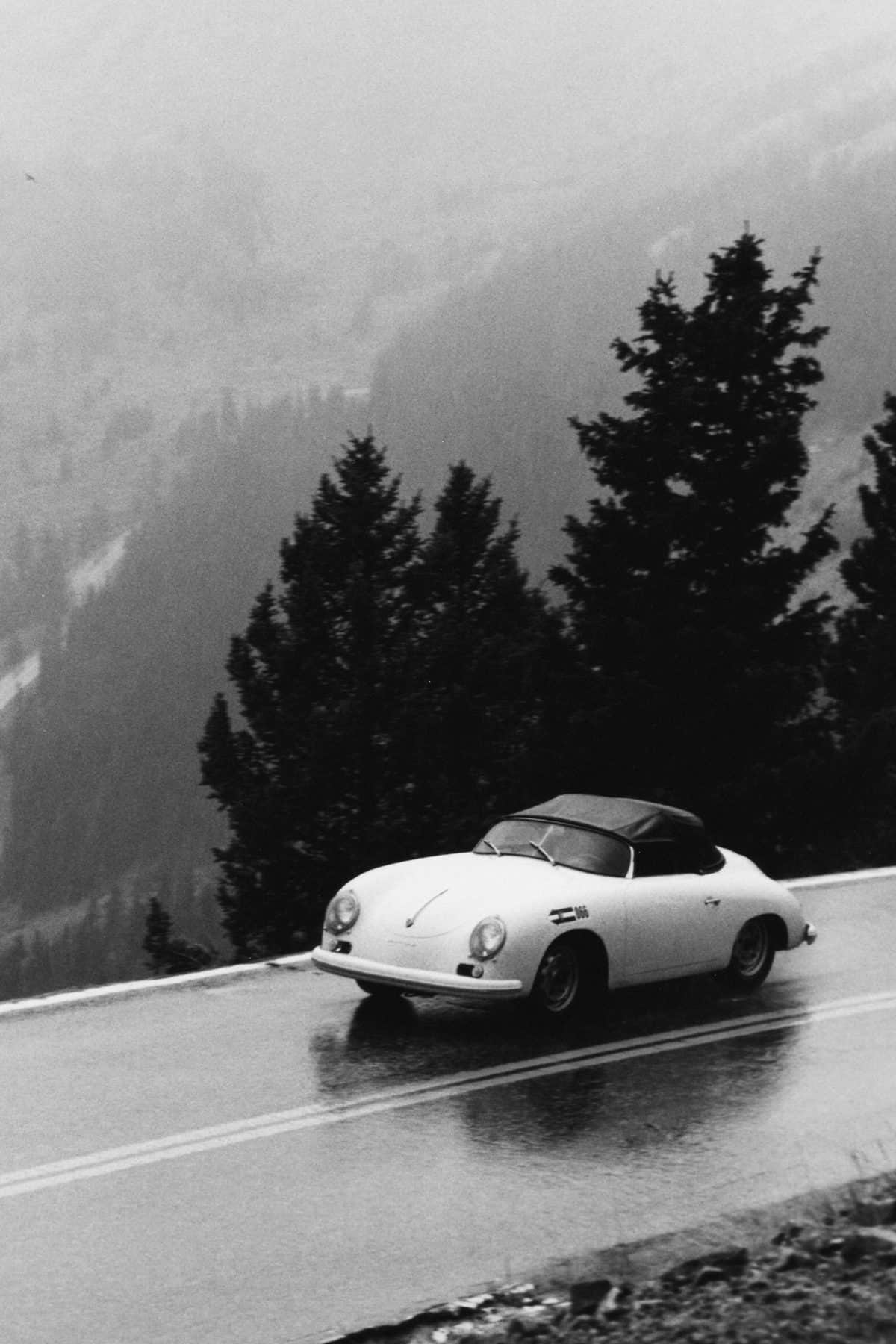
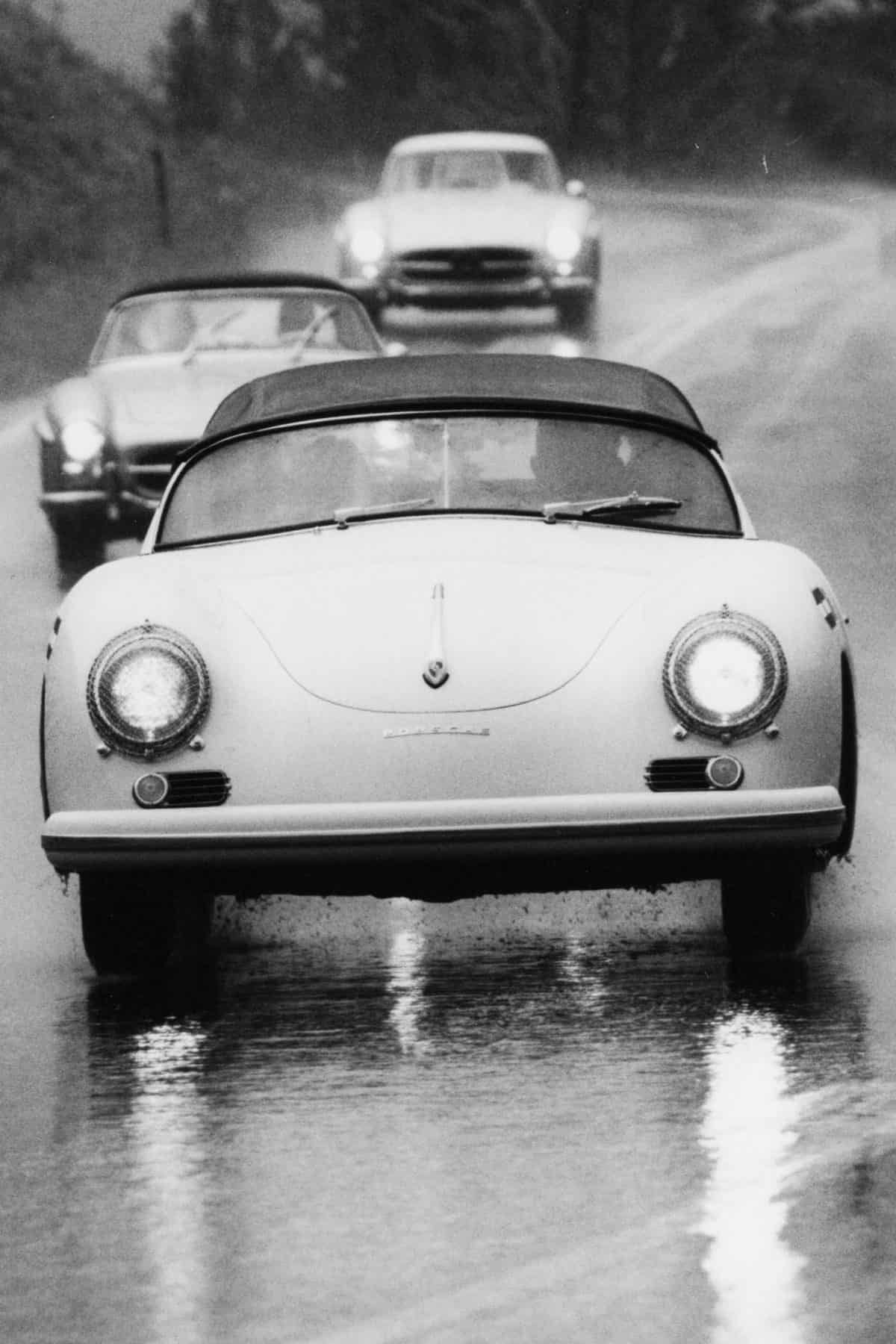
For the restoration, I returned the car’s external appearance to factory original with GT bumpers, Speedster windshield and other accouterments, but I did keep most of Bruce’s purely mechanical racing modifications: the 1600 RSK-spec roller crank motor with its 46 IDA Webers, his rear fender mounted oil cooler, the annular disc front and the drum brake rear combination, which may have been a unique Jennings idea. I also retained the alloy bonnet and deck lids (Mehitabel was originally an “all-steel” GT), the “funny, Jennings-spec” shocks, big anti-roll bar, and, of course, because it looked so cool, the Porsche RS-60 Spyder steering wheel with its maroon plastic rim that Bruce installed on all three of his racing GT Speedsters.
I remember that Bruce liked the restored car. It was, and is, truly breathtaking, but today I long for the car in its lost and amazingly original configuration, marinated in its own historical juices as a relic from a long-passed time. But, like my friend Bruce, it’s gone forever.
I remember, as well, taking this fabulous car on one of the legendary, thousand-mile, Colorado Grand historical car tours with my wife as the suffering navigator. The Speedster still had its original, Jennings-spec transmission, which featured a set of very close ratio gears. If I recall correctly, a B first, an A second, an E (lower than A) third, and another C, a high ratio third gear, in top. With 8,000 rpm readily available, the transmission supplied all the speed Bruce ever needed at average tracks where lots of top end velocity was not required. For road work, this short transmission was less than optimal, as the RSK engine had to be kept in the five thousand and up range to travel at Colorado Grand velocities. So, it was very noisy, and you shifted it a lot.
I think the peak Grand experience that year was crossing over twelve-thousand-foot-high Independence Pass on our way to Aspen, Colorado. Naturally, it was raining to beat the band at lower altitudes and snowing higher up. GT Speedsters do not have defrosters. They do have pretty much useless wipers that barely oscillate or clean the screen. Adding to the excitement, we were blessed with the normal number of leaks over, around, and even under the windshield. Visibility was maybe thirty to fifty yards, probably a good thing considering the thousand-foot drops if you missed a turn. With the side curtains in place, which allowed more water to dribble into the cockpit, no fresh air could be had. All the water entering the car caused incredible fogging. Consequently, the taillights of the car we were following appeared only as twin, glowing red nimbi that flared brightly when the driver used the brakes. But at least the water dripping on our laps kept us cool. Fun times.


